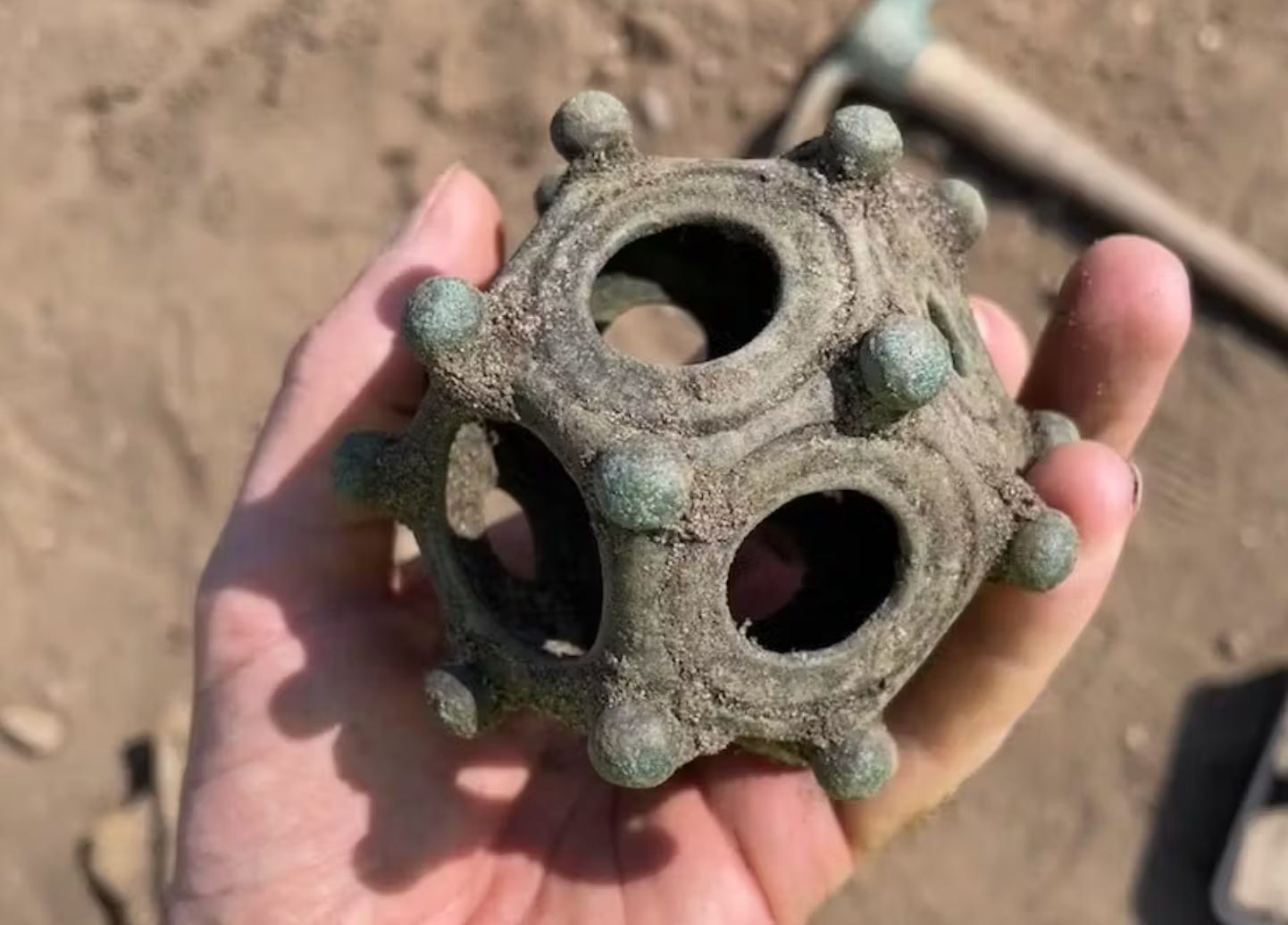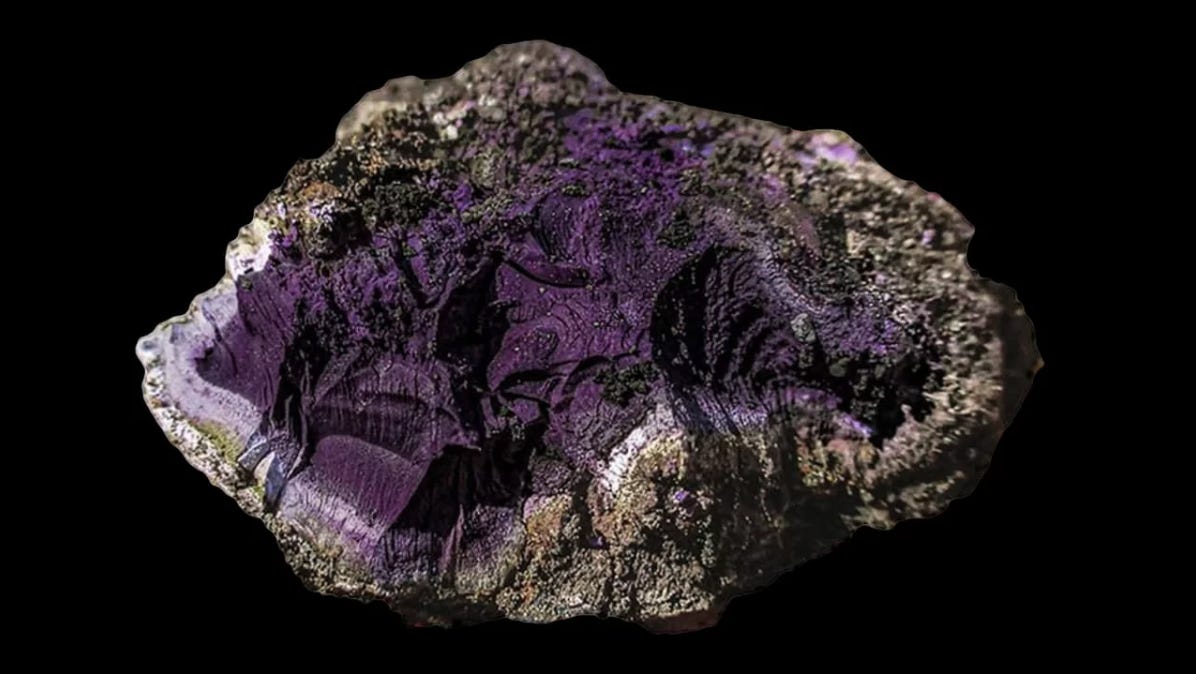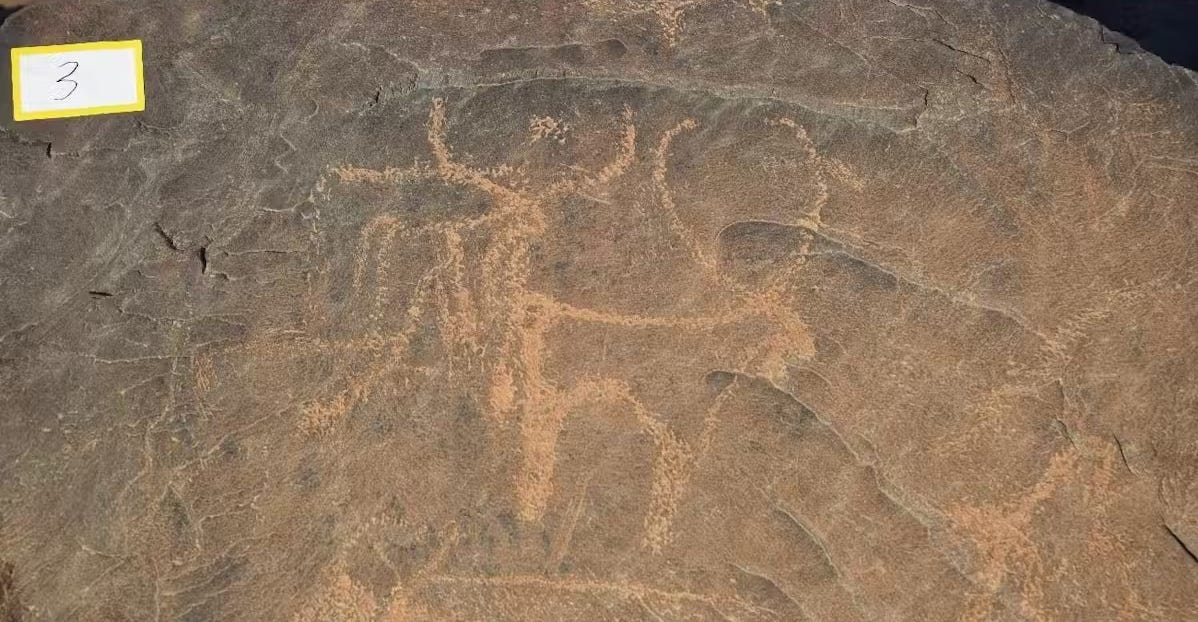This week, in history acting unruly…
Hawaii’s Lei Day (May 1) was born in troubling times—namely, US annexation. Now the holiday is facing its own troubles as environmental issues like deforestation are impacting the ability to make leis.
As you all might know, I attended Columbia University. Right now, my alma mater is in the news for its truly horrific handling of students protesting the genocide in Palestine and asking for the university to divest from Israel. Columbia has a long legacy of potent student protests, and the current president Minouche Shafik seems to be having a hard time reconciling that legacy with her personal stance.
It seems like there’s always something in the news about Catherine the Great and her sex life. Today its that, at great personal risk (for this was long before she was ever Empress), she had a whirlwind affair with the English Ambassador to Russia’s personal secretary when she was in her mid-twenties.
New dinosaur alert! A cousin of the velociraptor, the newly identified “megaraptor” more closely resembles the smart and fast creature of Jurassic Park imagination.
We have truly no idea why Roman craftsmen made dodecahedrons or what they were used for. But another was just found in Britain, and it is cool looking.

This Roman dodecahedron is in incredible condition. Photo credit: Norton Disney Archaeology Group. You may have noticed a pattern in over a year of roundups: A lot of archaeological finds, especially in the UK, are accomplished by enthusiasts with metal detectors. So who gets to keep those artifacts?
Lmao, some of these historical markers are, uhm, incorrect? Historical markers are largely driven by political ideologies and can be ordered by ~anyone~, though, so maybe this shouldn’t come as a surprise.
Prophecy has always had a special place in history, especially in the histories of the kingdoms that today make up the UK. According to prophecy, England will fall if ravens ever depart the Tower of London, so for over 300 years a Ravenmaster has ensured that there are always at least six birds in residence. A new one was just appointed.
Speaking of the 17th century, thanks to a new project led by professors from univerisities in Belfast and Warwick, we can listen to music from the 17th century again (played by modern musicians, of course).
The image below may look like a topographical map dyed purple, but it is actually an incredibly rare example of a chunk of Tyrian purple dye that was just found in England! The dye was also known as “imperial purple” and valued during the Roman Empire—and after—for being extremely vibrant, and therefore ridiculously expensive. Now when I say it is ‘incredibly rare’ I mean that it is the very first of its kind ever discovered anywhere in northern Europe… and possibly the entire former Roman Empire.

This fragment of Tyrian purple was found in Carlisle, England. Photo credit: Wardell Armstrong. And just in case you ever thought we might be done learning about Rome and Roman history, a previously unknown type of amphora has been discovered! She’s cute. She was found in a 4th century Roman shipwreck and was apparently transporting some kind of plant oil.
The 500-year-old historic Çardaklı Hamam in Turkey is going to be preserved and reused as a gastronomy gallery. Hammams are a vital part of Ottoman history, and not many survive that are in good condition, so this is exciting.
A 7,000-year-old settlement has been discovered in Serbia. It is particularly interesting because hardly any Late Neolithic human settlements are known in the Banat region.
A 4,000-year-old lipstick has been found in Iran. It bears a striking resemblence to modern lipstick: it’s about the same size as a modern lipstick tube, and made from surprisingly similar ingredients.

An extremely zoomed-in image of the elements that make up the lipstick. Image credit: Nature Scientific Reports. This incredibly beautiful ritual that dates back centuries makes two friends into siblings. Could it be seeing a resurgence today?
In…death? News?:
Don’t read further if you’re easily spooked: Does your home’s tilework contain human remains?
When Spiritualism swept Europe and the US, not even the White House was exempted. Several US First Ladies hosted seances in the president’s quarters.
In Austria, the first Roman mother-daughter joint burial has been clearly identifed. The grave was excavated 20 years ago, but it was only with modern technology that the relation of the two women (and possibly their horse) could be firmly established.
A luxurious grave possibly belonging to a king over 2,000 years ago has been uncovered in China. The tomb is the “largest, highest-ranking, and most structurally complex ever unearthed.”
The enigmatic King Cerdic, who established the kingdom of Wessex, has been found again…maybe. Or, at least his grave might have been. This is pretty in keeping with a man whose very existence is occasionally disputed.
80 years after he initially went missing, a Tuskegee airman’s body has been identified through DNA research and he’s been laid to rest.
As a cancer, astrologically speaking, I’ve always wondered why the disease and my sun sign share a name. It’s probably because the philosopher Galen thought that tumors resembled a crab in both appearance and personality.
Private clubs are often seen as the domain of men. But during the Edwardian heyday of them in London, women had their spaces too.
Speaking of forgotten/erased women’s history, who were the real courtesans behind the new show Heeramandi: The Diamond Bazaar?
Sometimes its called the Coronation Stone, sometimes its the Stone of Scone, but sometimes its the Stone of Destiny. Now archaeologists think it might have been a door step before it became the most important rock in the UK. The level of wear is too high for something only brought out whenever a new monarch is crowned.
Almost exactly thirty years ago, an ancient sword was found stuck upright in the ground in Valencia, Spain. Obviously, it was nicknamed Excalibur while it underwent testing and examination. Now it has been firmly established as dating to the Umayyad caliphate that once ruled over Spain—only one other specimen like it has ever been discovered in the area.
Once upon a time in the United States, preachers were rockstars. And Henry Ward Beecher, preacher extraordinaire, had affairs like any other rockstar. The only difference was that one of his affairs launched a trial that the American public became absolutely obsessed with.
Like this story? Debby Applegate wrote an incredible biography of Henry Ward Beecher. She also wrote Madam, the biography that inspired my episode on Polly Adler.
Was the Sahara once…green? Before it was a desert, this region supported cattle, one of the world’s most notoriously water-demanding creatures. It may seem wild to us today, but the rock art found in eastern Sudan tells a tale of a once lush landscape.

Cattle are some of the most commonly depicted animals in rock art in Eastern Sudan. Image credit: Julien Cooper. Every year, the US National Trust for Historic Preservation releases a list of the most endangered historic sites in the US (or on US-held land). This year’s list includes a church that allowed Black parishioners, a beautiful lighthouse in New York, a museum in the Virgin Islands, the Sitka Tlingit Clan Houses in Alaska, the American Legation in Tangier, Morocco, and more.
When he “found” Australia, Captain Hook took away several spears from Australia’s Indigenous people to keep as a souvenir. In a ceremony at Cambridge University, they’ve finally been returned.
Technology might be helping us find more archaeological sites, but climate change is making it harder to observe them.
Changing weather patterns aren’t the only thing harming archaeological sites! Turns out many are contaminated with microplastics and that might be very bad for historical sites and research.






That fabulous chunk of Imperial Purple dye is quite striking. Do the snails that produced that color still exist? It was my understanding that Romans killed them off, but it may not be true.
Why don’t Emperors wear imperial purple in modern media representations? They did in older, even colorized movies, but now we get whatever the costume dude likes. A move away from historical accuracy, or just hubris? Enquiring minds want to know…